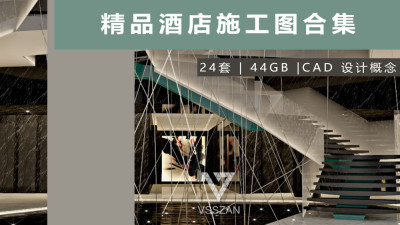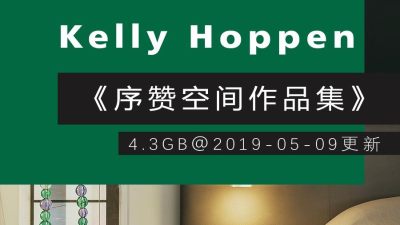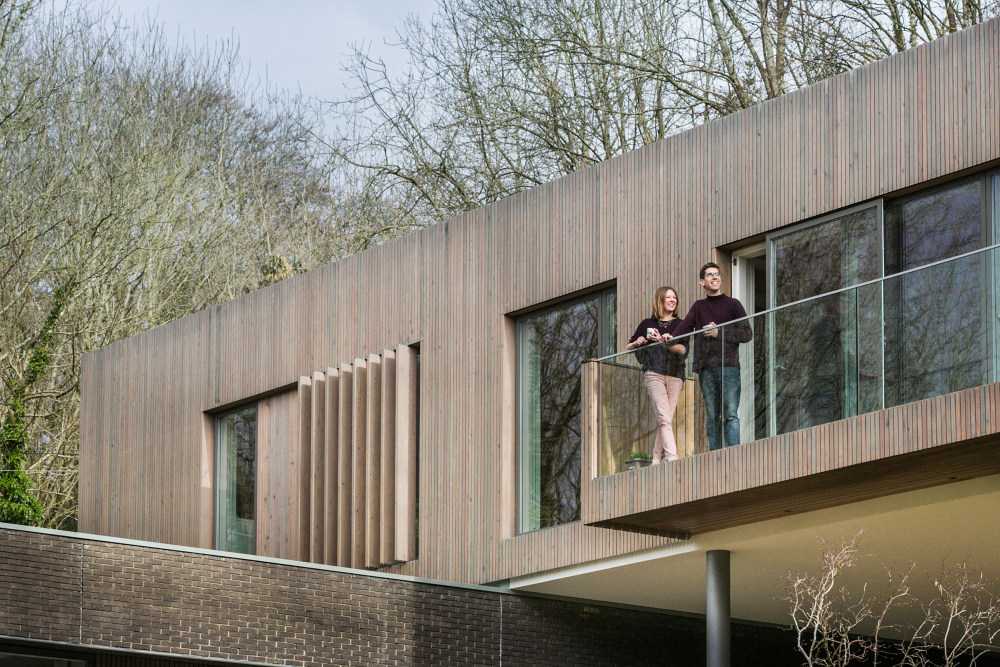
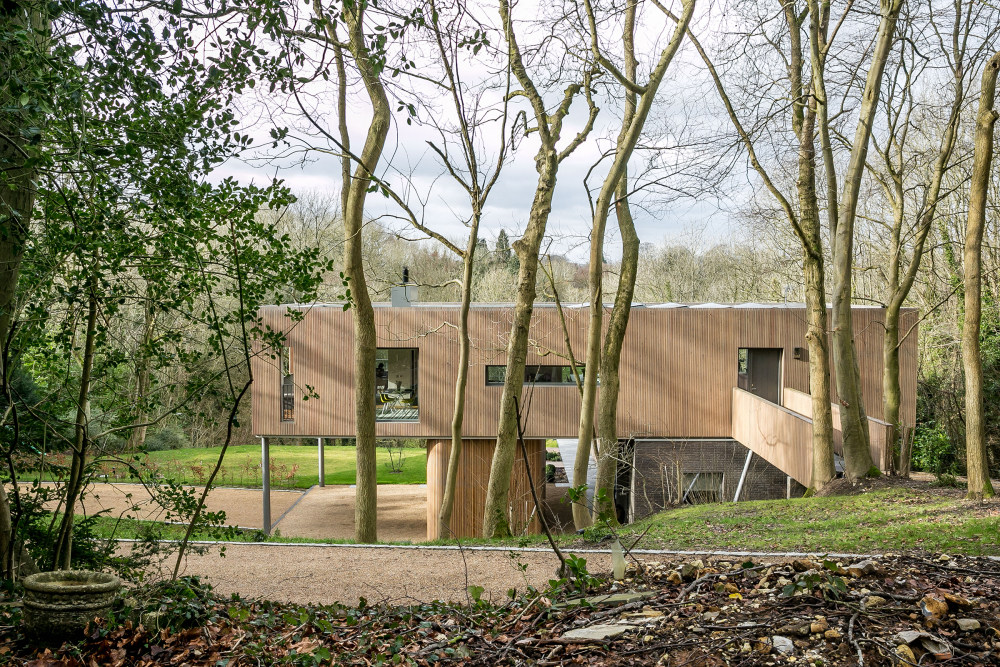
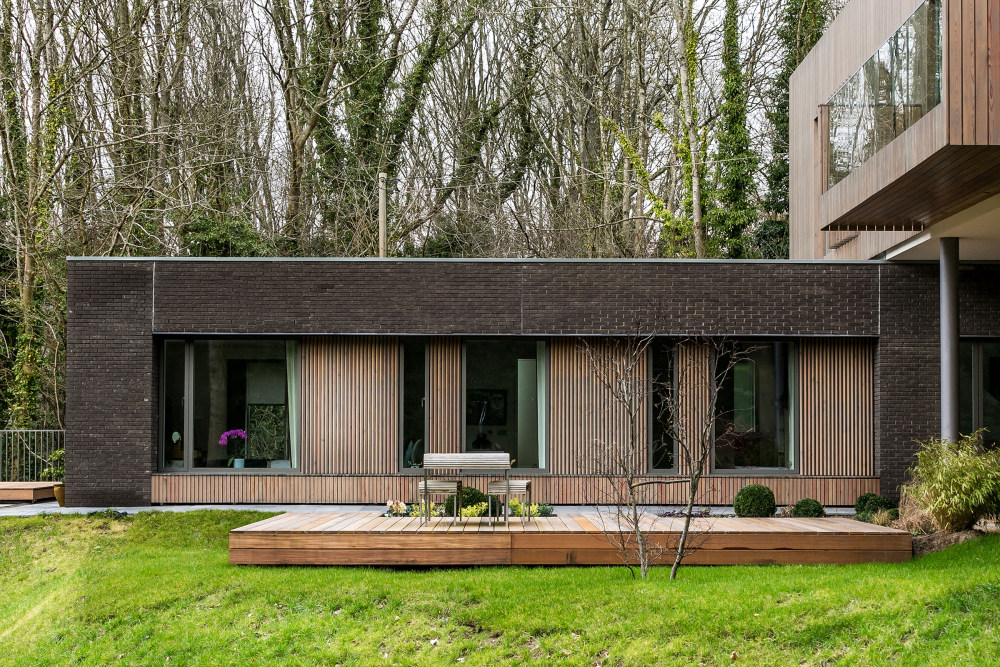
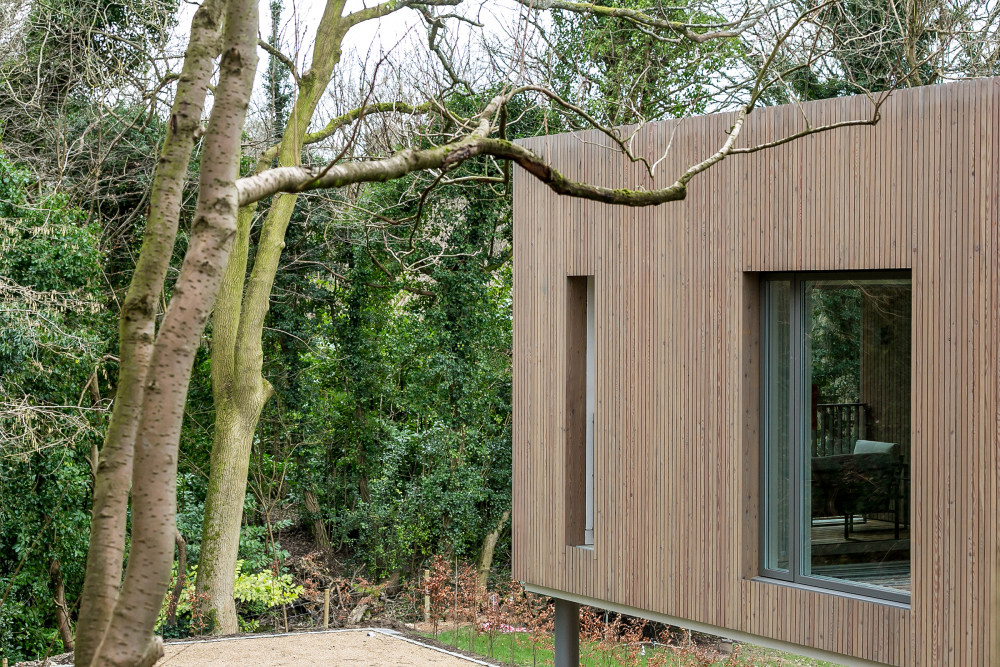
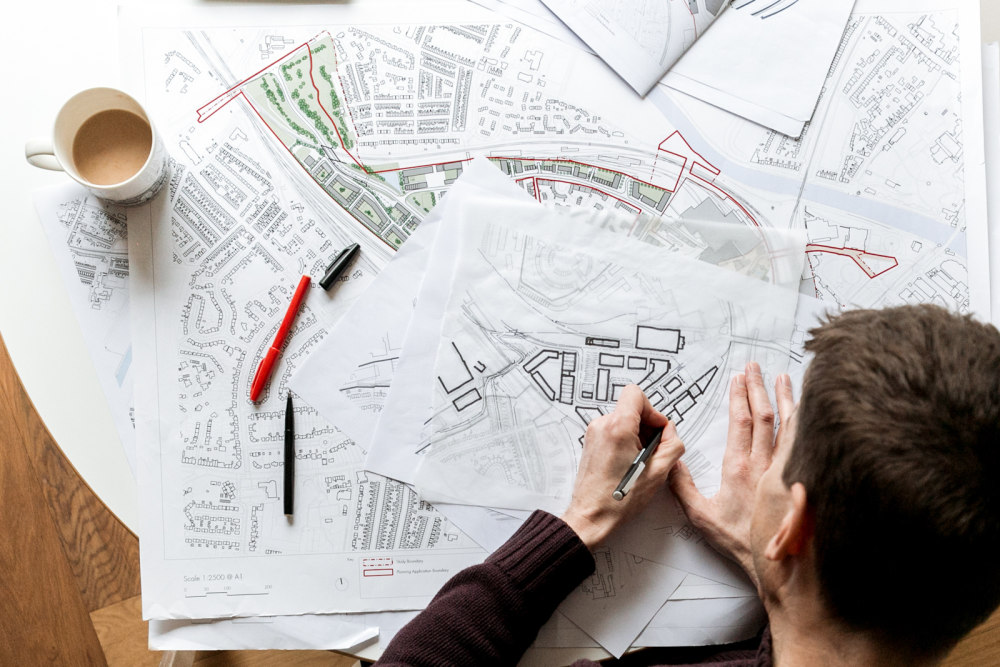

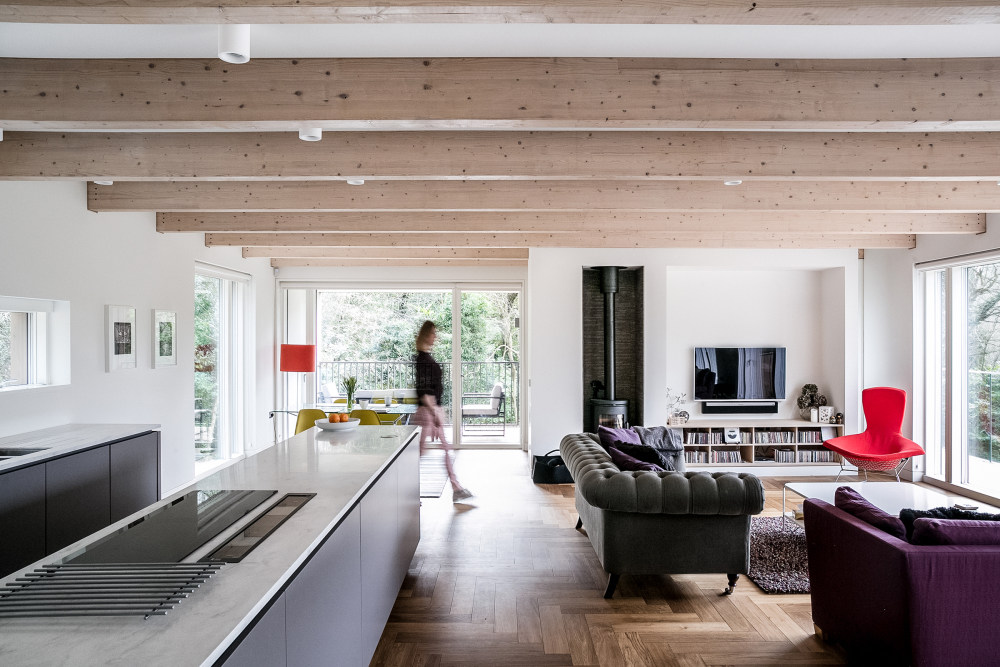
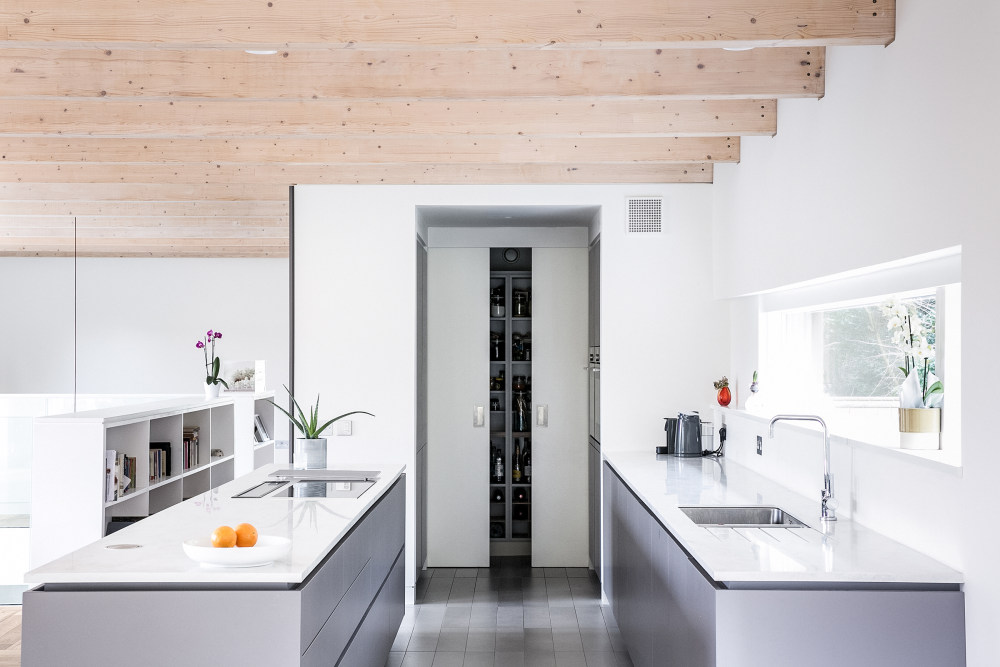



My inspiration came from a number of sources when I went about designing a sustainable family home. Le Corbusier’s houses, such as the Villa Savoye, were a reference point, as were Alvar Aalto’s buildings for creating texture and warmth, and also a connection to the wooded landscape.
“In my day job, I work on master plans and big projects, so designing a one-off house was sort of a new thing for me. Our overarching brief was to create a home for my family that was sustainable and connected to nature.
“My wife, two children and I were living in Forest Hill in south London in a typical terraced house before. Our children are of primary school age, so we knew if we were to leave London it would have to be while they were still young. We also wanted to have more open space and fresher air around us.
“We came across the plot of land online and jumped on it. The location is in the North Downs in Surrey. It offered the right amount of land and seclusion, while also giving us the ability to design a house as a modern response to the site, rather than something that would be very contextual.
“There was an underlying desire to make the building overtly modern in its interpretation and use of material, which we chose to blend in with the woodland. We used dark bricks and natural timber cladding so that over time the house will blend itself into the surrounding trees.
“The site comprises a steep slope that drops 25 metres from the top of the garden to the bottom. We wanted the house to work with the slope and so we arranged the living areas above the bedrooms so that they look out towards the garden and over the valley.
“The house sits in green belt land so we were restricted in terms of how big it could be. We incorporated a flat roof to reduce the volume, but also created an overhang to park the car under, instead of a garage.
“The house uses Passivhaus principles; it was an important part of our design process to minimise energy usage and incorporate a sustainable approach.
We used insulation made of recycled newspaper, solar panels and triple glazing to limit the house’s environmental impact.
Moving in, weve noticed that the mechanical heat recovery ventilation unit we installed means that the quality of air which we draw in and filter from the adjacent woodland provides a really comfortable environment.
“The quality of light that comes through the surrounding canopy is really good and changes through the seasons. When it snowed a lot recently, my wife noticed that the light created a serene quality throughout the house as it reflected through the windows and around the different elevations.
“Because the top floor of the house has four different aspects, we get views of the trees beyond the garden on one side and sunlight coming in from another. I think it contributes to a qualitative sense of wellbeing.
“Last summer we left the doors open throughout the day and it was lovely to have a feeling of indoor and outdoor space merging into one as the children ran in and out of the house and we had lunch with friends outside. We get to engage with the landscape in a really positive way.
“We’ve found that the balance of inside and outside space is offering us a lifestyle that is closer to nature. It’s different from living in a Victorian terrace in London; now, we get to eat breakfast or have a glass of wine on the balcony.
“The gradient of the slope means we have built terraced gardens and we have plants, vegetables and fruit trees growing in them. We spent a lot of time last summer regaining control of the landscape after it had been a building site so we’re looking forward to making the most of it this summer.
“The children love it. Moving into a lot of rental properties during the build was quite hectic but they’ve settled in very quickly. When we finally moved in they asked, ‘Can we throw our boxes away now?’”
Jason, how do you define modern living?
To me, it’s living with plenty of daylight and flexible, functional space in a sustainable way with minimal energy usage. A house needs to feel open yet comfortable and should engage with the weather and landscape outside. As we and our children grow older, the hope is that the house continues to respond and adapt to our spatial and functional needs.
If you were to move, what would be the first thing you’d take with you?
Having moved four times in the last five years, we have no intention of moving again anytime soon! But if I was to take one thing, it would be my wellies. The move out of London and having our woodland garden has meant that they have become a regular fixture. I wouldn’t now give up living with the fresh air and countryside around me.
Is there a property on The Modern House website that has caught your eye?
Having grown up in Suffolk, the barn conversion in Assington drew my attention. It has a well thought through balance of old and new and, unlike many barn conversions, it has a very nice quality of natural daylight that helps emphasise its internal textures.
Do you own an eco-friendly home? We are now booking appraisals for the Spring selling season. If you’d like to know the current value of your home, please get in touch to reserve an appointment.
Read more: Green Pastures: contemporary eco homes outside London
- 转载自:The Modern House
- 语言:English
- 阅读原文
|

 发表于 2020-8-4 04:26:57
发表于 2020-8-4 04:26:57














